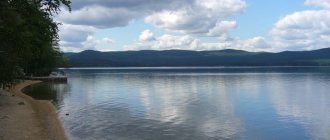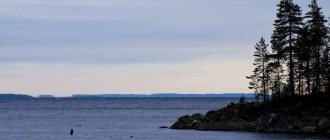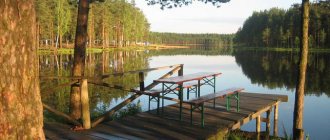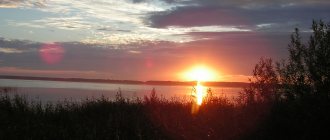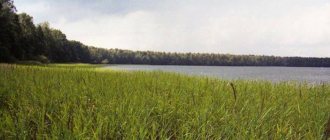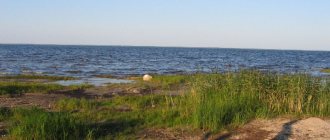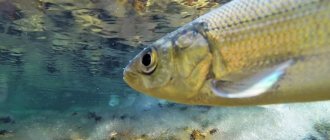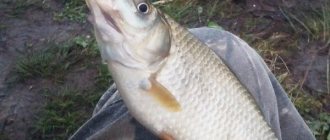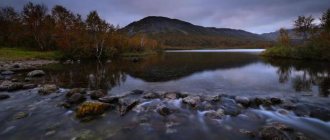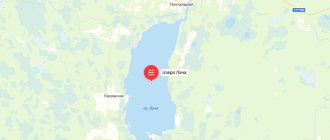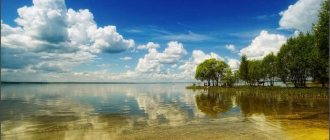Spinning.
Catch: 5-10 kilograms
Fishing location: West Bank
All week at work we were digesting the message about very successful fishing on the lake. The pike of one of my friend's friends. To say that it took a long time to decide to go there would be a lie. We decided right away, and by the end of the week a team of 6 spinners had assembled. Although doubts of course remained. It seems like it’s still a little early in Shchuchye. It wasn’t even decently hot yet. And the pike there seems to be very thermophilic. Some kind of perverted pike, not like everyone else. And on Saturday, three crews of 2 people each met outside the village of Loginovo along the Kamensky tract at the railway crossing to further continue the planned route. The strangers got to know each other, had a smoke break and moved on in three cars. Three of the team had already been to this lake more than once and promised a bite no matter what. Three of us, including me, were traveling for the first time, so we could be said to have been taken. The road to the lake is approx. I won’t describe 8 km, it’s a whole epic! This is worthy of a whole story, so I’ll leave it out. There is a sea of forks in the forest, apparently everyone makes their way in their own way. Therefore, without a guide, it’s no wonder you get lost. It’s good that we were still traveling on dry ground, there was no rain. Although there were plenty of magic and fallen trees and stumps. An hour and a half later we reached the shore. We immediately saw that there were enough cars and tents on this shore. "Nivas", UAZs and SUVs. People took advantage of the good weather. One fisherman landed on the shore. We came up to inquire about the bite. The answer was the usual - today it didn’t bite and showed a kukan with 4-5 shrugai, 400-500 grams each. Among them, one decent one stood out, which after control weighing showed 3,800 kg. Everyone was caught on a Chinese spinner, as the fisherman said. We immediately, at the tempo of a waltz, without wasting any time, brought the craft into working condition and moved to the other side of the lake to the Ural Military District base to settle in, because We arrived overnight. We all settled down together in a room for 6 people, had a quick snack and water. And they did the right thing, since, as it turned out later, we had little time for full-fledged fishing. Damn, the weather let us down. The weather forecasters were right at the last moment. This was Dima and I’s first time at the lake, so we moved at random. Although we were, of course, previously oriented where and what to do. But apparently it doesn’t change from year to year, circumstances change, so this didn’t help much. On the advice of experienced deep-sea cranks, I recruited the same minnows. But apparently before the tenants still looked after the lake, now it has become catastrophically overgrown. Algae from the bottom to half the water, and in shallow places to the surface. Almost every cast brought a bunch of grass. But the average depth of the wobblers turned out to be insufficient for me. But in total I tried a dozen and a half different ones. Moreover, each wobbler was used more than once during two days of fishing. I’ll say right away that none of the expensive ones worked. Neither Orbit, nor Rigge, nor Khamsin, nor Pointer, nor Rapala, nor any Pontoons. No, I’m lying – on the mega-bass Griffon I cast 2 or 3 smallmouths and a couple of good perches. And practically only Kosadaki and white turntables worked for me. In general, on the first day we swam for up to 16 hours. Only 4 or 5 pieces were taken, with one weighing about 1 kg, one weighing 3,500 kg and the rest 400-500 grams. The most one was caught right on the border of water lilies and I had to fight it to the limit so that it wouldn’t lead into the thickets. Yes, and such a nimble one got caught, pressing and pressing, she kept trying to get under the boat. I even had to press down the form a couple of times. Still - light 3.5 - 12 g. But my beloved Bassmania did not disappoint this time either. But the way the Zauber clutch sang – I’ve never heard better music! I tried not to give her rest, didn’t force her, and after 10 minutes I got her into the landing net the first time. Of course my partner helped. About an hour later the weather began to deteriorate, a strong west blew and it began to rain. By 16:00, all 3 crews had gathered at the base. Some had more in quantity, some had less, but no one had more trophies. All up to 0.6 kg. It rained all evening and all night. So the time was spent having table conversations, smoking fish and tasting the resulting delicacy. The rain stopped only in the morning, so we had time to sleep. And in the morning at eight o'clock we go back to the water. The morning was cloudy, so I had to dress warmly. And the wind, very decent, did not stop. Fishing on the second day was not comfortable, it was constantly dripping. And it didn’t bite very much. A strong westerly wind constantly blew the boat away, and we had no cargo. And if on the first day I was luckier, then on the second day my partner distinguished himself. Although no one had any trophies either. At 2 p.m. we started getting ready to go home, swam back to the eastern shore to the cars, collected the boats and ammunition, and loaded up slowly. We talked with a group of fishermen on the shore, who stayed for another day and headed home. We got back from the lake to Chernousovo much faster, in 50 minutes. Apparently I really wanted to go home. And longer than the log - asphalt all the way to the house.
Lake Shchuchye is located in the Yegoryevsky district of the Moscow region. This reservoir belongs to the Radovica lake group and is one of the most remarkable in the area. The area itself is a swampy area where peat deposits were previously developed. All reservoirs are interconnected into a single network due to artificially created canals and flows between them, although many of the lakes of the Radovic group themselves are reservoirs of the Ice Age. Today, many of them are overgrown, and the area is becoming increasingly swampy and inaccessible.
Lake Shchuchye is an oval-shaped reservoir. The approximate length of the lake is 1500 meters and the width is 800 meters. The area of the reservoir is about 92 hectares. The relief of the reservoir is varied with drops and shallows. Depths in Lake Shchuchye range from half a meter to 17. The bottom of the lake is muddy and marshy. The water in the reservoir is almost black peat. The banks are overgrown and very swampy, so fishing from the shore on the lake is almost impossible.
When going fishing on Lake Shchuchye, you must take a boat with you, which will allow you to fish anywhere in the reservoir. The lake is rarely visited today, so anglers can count on a good catch here. However, not everything is so simple; the reservoir is really difficult in terms of fishing conditions and not every angler will be able to immediately pick up the key to it.
Spinning fishermen on Lake Shchuchye can count on catching pike and perch. There are some very decent specimens here. And the fish are very beautiful, especially the perch, which has a dark brown color. Pike should be caught with wobblers or large spinners. Fishing with a step near the bottom is difficult because the bottom is too soft. The same baits are suitable for perch, only smaller in size.
Crucian carp, roach, tench, rudd and the same perch are mainly caught using float gear. The most interesting thing is to catch crucian carp, and if you manage to discover the routes of tench, then this fish will bring a lot of pleasure to lovers of float fishing. The local crucian carp reaches significant sizes. The fisherman may come across specimens weighing under 2 kg, the same applies to tench. The best bait to use is animals – worms, bloodworms and maggots.
The reserve "Lake Shchuchye" is located in the village of Komarovo on the Karelian Isthmus. Its length is 1.1 km, width - 0.6 km.
Lake Shchuchye (“hauki yarvi”, Finnish) gained its fame long before it appeared on Russian territory. Several centuries ago, the area next to the lake was part of the Swedish royal park Hauki-järvi, and game hunted here was delivered to the king’s court in Stockholm. The age of the local swamps, which include Shchuchye Lake, is approximately 5 thousand years.
This lake used to be very fishy. Golden and amber pike, trout, and roach were found here. The water here is very clean and is close to drinking quality. The lake is of glacial origin, it is located between the kama hills in a basin, has a length of more than a kilometer and a width of 750 m. The surface area of the lake is 53 hectares.
On the eastern side, a peninsula extends 300 m into the lake, which divides the lake into reaches. The shores of the lake are sandy or peaty. The shallowest water, the Southern Reach, becomes swampy and overgrown with reeds. The average depth of the lake is 2-2.5 m, in the deepest place - 2.9 m. The quickly warming waters and the sandy bottom of the lake attract a large number of vacationers in the summer. In winter there is active ice fishing here.
The GGI Institute used these territories as a research site for geographical and hydrological studies.
The lake belongs to specially protected areas (natural monument, reserve). A kilometer away is the Komarovsky necropolis. On Cape Vesely there is the former summer residence of academician N.N. Petrov, founder of the Oncology Institute in the village of Pesochny.
On the territory of the reserve it is prohibited to park and drive cars, make fires, litter the area, damage vegetation, walk pets, build, contact with wild animals, cut down trees, gardening and horticulture.
The boundaries of the protected area run along the clearings of the forest blocks of Molodezhny and Komarovsky forestry, coinciding in the northeast with the border of St. Petersburg and the Leningrad region. The total area of the reserve is more than 1000 hectares.
Based on the results of a comprehensive environmental survey of the Lake Shchuchye reserve carried out in 2009, it was found that the hills chaotically scattered throughout the territory are a complex of unique water-glacial relief, which is composed of yellowish sands with inclusions of pebbles and gravel. It is a kame type of landscape. Its age dates back to the Paleolithic (more than 10 thousand years BC).
The Shchukin stream, which is a tributary of the Sestra River, flows from the southeast of Lake Shchuchye. The Black Stream flows into the stream from the north, which originates in two small lakes (Black Lakes), located a kilometer from Shchuchye.
By going around Lake Shchuchye on the right side, you can get onto the road to the Lammin-suo (Lake Swamp) reserve, where the scientific station of the Hydrological Institute is located.
The administration of the village of Komarovo is engaged in landscaping and landscaping the territory of the south-eastern part of the shore of Lake Shchuchye in order to streamline the recreation area and preserve the unique natural landscape of this area. Thanks to their efforts, the roadway was enlarged with an asphalt surface, temporary parking for vehicles was organized, and a walking path was built in a westerly direction. It is part of the so-called “health path”, running along the coast to the west and southeast parallel to the road to Shchuchye Lake, special areas for variety and recreation have been created while preserving existing plantings, decorative sculptures and flower beds have been installed, and informative design elements have been installed.
On June 3, 2011, the governor of St. Petersburg, together with the district administration, as well as representatives of the Nature Management Committee, held the grand opening of the reserve and accepted the work carried out in accordance with the project for the improvement of the south-eastern coast of Shchuchye Lake. To mark the opening of the reserve, a memorial plaque was installed on a large boulder located on the shore of the lake, and a live pike was released into the lake by the governor.
The state natural reserve of regional significance “Lake Shchuchye” is a specially protected natural area (SPNA) of regional significance and has a complex (landscape) profile.
The reserve was formed by the Government of St. Petersburg (Decree of the Government of St. Petersburg dated January 18, 2011 No. 9). State administration and state control in the field of organization and operation of the Reserve is carried out by the Committee for Natural Resources, Environmental Protection and Environmental Safety. Ensuring the functioning of the Reserve, including ensuring compliance with the regime of special protection of the Reserve, is carried out by the state institution “Directorate of Specially Protected Natural Areas of St. Petersburg”.
The reserve was established in order to preserve and restore taiga forests in St. Petersburg and maintain ecological balance. The main objectives of the Reserve: - preservation of the taiga forests typical of the Karelian Isthmus; — preservation of the complex of water-glacial relief forms; — conservation and restoration of biological and landscape diversity; — creating conditions for studying natural processes in natural complexes and monitoring changes in their state; — creating conditions for environmental education and awareness, development of ecological tourism.
The reserve is located in the Kurortny district of St. Petersburg on the territory of the municipalities of the village of Komarovo and the city of Zelenogorsk. The area of the Reserve is 1157 hectares.
Any activity within the boundaries of the Reserve is prohibited if it contradicts the goals and objectives of the formation of the Reserve and can cause harm to natural complexes and objects, including: - construction of buildings, structures, structures, and other objects not related to ensuring the functioning of the Reserve, as well as individual housing construction; - conducting gardening, vegetable gardening and summer cottage farming outside the land plots intended for these purposes; — exploration and extraction of mineral resources, development of mineral deposits; — activities entailing a change in the hydrological regime, with the exception of carrying out measures to preserve and restore natural complexes and objects located within the boundaries of the Reserve; — pollution of soils, groundwater, surface and groundwater, wastewater discharge, including after treatment; — use of mineral fertilizers and pesticides; — disturbance of soil cover, excavation work, with the exception of carrying out measures to preserve and restore natural complexes and objects located within the boundaries of the Reserve; — cutting of tree and shrub vegetation, disturbance of vegetation cover, collection of plants and their parts, with the exception of conducting scientific research, carrying out measures for the conservation and restoration of natural complexes and objects located within the boundaries of the Reserve; - destruction of objects of the animal world and causing harm to them, removal of objects of the animal world from their habitat, including hunting and fishing, as well as causing harm to the habitats of objects of the animal world, with the exception of conducting scientific research and measures to restore populations of rare, under threat the threat of extinction of wildlife; — contamination of the territory, disposal of all types of waste; - making fires, burning dry leaves and grass; — movement and parking of mechanical vehicles and mopeds without approval of the Directorate and the Committee outside Lenin Ave., Ozernaya St.; — movement and parking of motorized watercraft; — expansion of the existing road and path network; — release of animals into the natural environment; - walking, running and grazing farm and other domestic animals; — disturbance of birds during the nesting period from April 15 to July 15, including breaking the silence with the help of sound-reproducing and sound-amplifying devices; — damage to fences, information signs, stands and other infrastructure of the Reserve.
On the territory of the Reserve it is allowed: - laying and arrangement of ski trails as part of the sports ski stadium facilities at the address: Kurortny district, Zelenogorsk (Shchuchye Lake area); — land use and development of land plots specified in Decree of the Government of St. Petersburg dated January 18, 2011 No. 9; — laying engineering and technical communications and construction of public utility structures necessary to ensure the functioning of populated areas, if there are no options for their location outside the boundaries of the Reserve, subject to their primary location within the boundaries of existing roads; — road activities in the right of way of roads located in the Reserve, with the exception of the placement of road service facilities; — environmental, environmental education and other activities that do not contradict the special protection regime of the Reserve.
(Komarovo). The map below shows its location and may be useful for those who want to visit these wonderful places for the first time.
It is very important to pay attention to the fact that there are several lakes with a similar name. They are located in Buryatia, Sverdlovsk region of Russia, Kazakhstan. Our reservoir is located in the village of Komarovo, Leningrad region. The area here is so beautiful that it simply attracts those who are tired of the bustle of the city and want to relax their soul and body.
Reserve "Lake Shchuchye" - protection of virgin nature
Pike Lake (Komarovo) is classified as one of the territories that are under special protection. This is a natural monument. In 2011, the Shchuchye Lake reserve was founded in order to preserve unique landscapes and endangered species of plants and animals.
The infrastructure is well-maintained, and the surrounding areas of the reservoir are free from transport. There are many picnic areas and fun paths for cycling enthusiasts. And, of course, there are a lot of fish here - pike and roach. In a word, a paradise for fishing lovers. Only by plunging into the cool water, stepping foot on the soft green grass, and taking a deep breath of fresh air, can you feel like a part of this beautiful nature.
This landscape is an ideal place for a family holiday. And those who want to be alone with nature can retire to the forest thickets. The important thing is that Shchuchye Lake (Komarovo) is a paradise for people with different desires. Here everyone will find something for themselves.
Fishing trip to Shchuchye lakes!
Travel to the Shchuchye lakes!
Preface.
Shchuchye Lakes
located on the northern border of Novosibirsk and bordering the Tomsk region. The lakes combine two lakes: large Shchuchye and small Shchuchye, with a depth of up to 4 meters, the distance between the lakes is 200 meters. The banks are hard, steep, with numerous creeks. Vegetation around the lakes: pine predominates, birch grows along the edge. The lakes are inhabited only by pike, weighing up to 12 kg. This is where they got their name: Pike Lakes. The lakes are difficult to access, as they are located in the center of the Vasyugan Plain, which is “famous” for its impassable swamps, swamps, cedar islands, and numerous lakes. You can easily get here only by helicopter! And our Expeditioners, who will be discussed below, went to these lakes on two swamp vehicles of their own design. Such a trip is equated to the category of extreme, and therefore requires serious preparation, certain knowledge and experience of traveling in such conditions. The expeditioners drew up a thorough preparation plan and the composition of the expedition, it included: brothers, Volodya and Sasha Motorin, Sanych led the expedition, by this time he had extensive experience traveling along the Vasyugan Plain. It was decided to take “Omich” on the expedition. The departure was scheduled for September 25, 2009. These people, of different ages and professions, were united by a thirst for travel and a passion for spinning pike fishing!
And now the long-awaited September has arrived! The expeditioners first had to cross the Kuibyshev and Northern regions of the Novosibirsk region by car, which they did safely. After several hours of tiring travel, they entered the village of Nadezhdinka in the Northern region. Nadezhdinka greeted the expeditioners with rickety huts and thickets of nettles. The second stage involved continuing the journey on swamp vehicles. The first serious obstacle for the all-terrain vehicles was a river called Malaya Icha; it had to be forded, since there was no bridge across the river for a long time. The weather made its own adjustments; the water level in the river was still quite high due to heavy rains. Swamp walkers showed their floating qualities at their best! Literally biting into the opposite shore, one after another they escaped from the captivating water. Things were transported by boat. After packing everything they needed into the all-terrain vehicles, the expeditioners set off to their goal, accompanied by two four-legged friends. I will briefly describe the all-terrain vehicles on which this trip was made. All-terrain vehicles are homemade, with a breakable frame, two axles, tire size 1200x450, engines from the Izh and Ural motorcycles. Sanych affectionately calls his all-terrain vehicle Ant, for his hard work and endurance in off-road conditions. He has walked hundreds of kilometers and has been serving his owner for ten years. The second all-terrain vehicle was built taking into account the existing design experience: it was equipped with a more powerful engine, from a Ural motorcycle, and the wheels were locked; this journey became a serious test for it. The first kilometers of the route passed through the forest, crossing numerous streams and small rivers. This is off-road! Not without some oddities, the expeditioners “overshot” their turn through the forest, lost their way and went to the camp of the “bigwigs,” as the common people call the pine nut harvesters. The nut harvest was in full swing, tightly filled bags with pine cones stood awaiting their fate, they were shelled on the spot. The expeditioners were greeted with surprise; after some questioning, having determined the right direction, they continued on their way. The first day of the journey was coming to an end, it was getting dark. Having gone to the bank of a river called Makarikha, the expeditioners, having chosen a suitable place in a dense spruce forest, hastily arranged an overnight stay. They made a fire. At dinner, Sanych offered to “appease” Leshy, who had led them astray. We slept in bodies specially equipped for this purpose. The next day we finally left the forest, the streams ended, and the Vasyugan swamp began. The terrain has changed; instead of birches, low-growing Karagai pines have turned green. The swamp walkers, growling strainedly, obediently “walked” one after another, leaving a tread mark on the wet moss. The sky was cloudy, it was drizzling, and the weather here was changing very sharply. But this circumstance did not prevent the Expeditioners from safely reaching Lake Nadezhdinskoye. Lake Nadezhdinskoye is the first lake on the expedition’s route. The day was in full swing, so the expeditioners had time to settle in comfortably, fortunately, there was a beam (trailer trailer) on the lake, once abandoned by oil exploration. An overnight stay on the lake was planned to replenish their food supplies with crucian carp; the taste of local crucian carp is excellent; for this purpose, several nets were set up. The first crucian carp caught were already cooked for dinner. A migratory bird also stops at the lake, so the stuffed animals were put out in the evening. The night has passed. “Having knocked out” a couple of Gogles from the herd, at dawn, the Expeditioners got ready for the road. Vasyugan was waiting for them ahead! I will omit the road to Lake Lyubkino so as not to tire the reader. We arrived at the lake late in the evening, stopped on the very shore, and settled down for the night almost immediately after dinner. The lake is surrounded by pine trees and centuries-old cedar, forming a “crown”. The lake owes its unusual name to a woman named Lyuba, old-timers say she hunted in these places. I caught sables, killed bears, these places are rich in both fish and furs! So the morning has come. As the bright, golden sun rose, the morning fog melted, here is our Siberian beauty! After admiring the sunrise and having breakfast with fresh crucian fish soup, we set off. The sun rose to its zenith, and here it was, the final goal of the expedition: Lake Shchuchye! The weather is beautiful, sunny, the expeditioners impatiently take out their spinning rods, and here is the first pike, a little over a kilo. And again the line cuts the water, another blow and now everyone congratulates Sanya on her first good pike trophy at 6 kg! The day is short, having caught several pikes, we prepare for the night, make a fire, Omich prepares fish soup from pike heads. The sun went below the horizon, and only the bright sunset reminded of it. After dinner, Sanych and Sanya went to bed, the road took its toll. Vova and Omich shivered a little more near the dying fire and also wandered off to spend the night. The night covered us with its duvet. In the morning, as always, Omich was the first to wake up, coughing a little, and began to make a fire. From the noise of their wings, the dogs jumped off from their warm places, heated up during the night, this is a herd of Gogles “cutting” the morning air with their wings, the cool air “fell” on the lake, the bird is in a hurry to the south. The sun was breaking through the smoldering fog, the day was promising. After breakfast, everyone scattered around the lake in search of trophy pike. The pike grabbed the spoon greedily, even pricking itself, since it did not leave, and again attacked the spoon. Sanych was lucky first, he almost immediately caught a pike weighing 8 kg, and after struggling near the shore, the pike gave up. No one caught more than this specimen that day, although everyone was very pleased with the fishing, that evening around the fire the stories did not subside for a long time, of course, Pike Lake is the dream of many fishermen!
The next morning, they set up girders opposite our camp, tying them to empty one-and-a-half-pounds, with 800 grams of pike as live bait. And the pike didn’t have to wait long, the first one from work and the tied one-and-a-half started dancing as if it was caught in a whirlpool! Well, not far away Vova and Omich were spinning, noticing that something was not going well, Vladimir jumped into the boat and began to fight with Pike! Who wasn't going to give up! This struggle could be heard throughout the entire lake, and the cry of an enthusiastic Omich that spread across the lake said that everything ended well! Another trophy pike weighing almost 10 kg has been added to our collection! The pike was caught with everything that was offered to it: spinners, wobblers, twisters, Sanych tried to catch with mice that he bought in the winter in Novosibirsk and the same result! And Sanya caught more than a dozen pikes on a glider-popper one day on Maly Shchuchye?! Nice lake! And the fishing is good! In five days of fishing, we tried all the baits we brought with us, caught 6 large pikes from 8 kg to 12 kg, and one and a half hundred small ones! Just tired of fishing! The day of departure has arrived. The return route ran through the Bad Lakes.
The crucian carp in these lakes is very tasty and can only be caught in bad weather, hence the name. These places are also rich in cranberries; the expedition’s plans were to replenish their winter supplies with this priceless berry. The first good frost, on the Bad Lakes, reminded us that winter was just around the corner and accelerated our departure. See you Vasyugan! We will be back next year!
Now, after the passage of time, again some kind of “worm” is stirring inside each of us, and this means: again we are waiting for trips to the Pike Lakes!!!
author Sanych.
Flora and fauna
Wildlife is striking in its uniqueness. Here you can meet endangered representatives of fauna and flora listed in the Red Book. Exclusive specimens for the Karelian Isthmus include low kozelets and ball-bearing sedge. You can also find plants unusual for this area, for example, oak and In addition to simple shrubs and herbaceous species, English sundew and white sundew are found in the swamps. Very often you can see
More than seventy species of birds live in the habitat of Pike Lake. Forest polecats, foxes, and stoats live here, and you can also see martens. Sometimes an elk walks among the local landscapes and centuries-old fir trees.
Lake Shchuchye (Komarovo) - how to get there?
From St. Petersburg to Komarov is about 52 kilometers (road). You can get to Shchuchye Lake by train from the station. Udelnaya or from the Finlyandsky station to the station. Komarovo. It is four kilometers from the village to the beach. In about 40 minutes you can walk, enjoying the vast expanses of spruce forests with blueberries.
If you want to breathe freedom, admire the wonderful virgin nature, get away from routine and daily problems, and also get a charge of positivity, then you already know where to go. The magical Pike Lake (Komarovo) is waiting for its dear guests!
Winter fishing in Smolensk
Rating of the coolest places for Smolensk residents
1st place Desnogorsk reservoir Because the water is warm, therefore, the food supply, even in winter, is beyond any competition.
In addition, fish here are grown in cages. And something always falls to the wild inhabitants of the reservoir, who grow by leaps and bounds thanks to this “buffet”. On the Desnogorsk Reservoir, experienced winter fishermen catch pike, perch, crucian carp, and bream. Sometimes you come across trout, silver carp, two- to three-kilogram channel catfish, and tilapia weighing up to one kilogram. The most patient even catch herbivores - 90 percent of the handsome cupids. As a rule, no one leaves here without a catch. With a good bite, you can count on 15 kg of fish per day! In a word, not a place, but a paradise for a fisherman. 2nd place Smolensk Poozerie - lakes Baklanovskoe, Sapsho, Rytoe With a normal bite, the catch is 5-7 kg. There are a lot of fish. There are 2-3kg breams and one and a half kilogram pike perch.
3rd place Reservoir of the Smolensk State District Power Plant (village Ozerny, Dukhovshchinsky district) According to fishermen, there are quite a lot of nets in this water area of the fishing “microdistrict”, which is not at all encouraging. However, there are still plenty of carp, crucian carp, and bream, as well as roach, perch, ruff and gudgeon. There are pike perch and silver carp.
4th place Lake Shchuchye (Tver region). 160 km from Smolensk You won’t catch silver carp and grass carp here, but there is plenty of pike perch in Shchuchye. There are also quite respectable specimens - about five kilograms. But there is one subtlety: you need to catch ten baits, and then you will be guaranteed five or six large fish, if, of course, the wind of luck blows in your direction. There are quite a lot of less valuable fish on Shchuchie - bream, perch, roach. As for pike, it is not “friendly” with pike perch, so these predatory inhabitants of reservoirs peck with pike perch in turns. 5th place Lakes Usman and Dniko (Pskov region). 140 - 150 km from Smolensk
These are also very pleasant places for lovers of winter fishing, who know that here you can catch plenty of bream, roach, perch and pike.
6th place Lake Petrovskoye (near Lake Akatovskoye in the Demidovsky district)
No punctures
Experienced anglers always have a lot of clever tactical and technical techniques in their “stash”, but they are not in a hurry to share them. However, “Working Way” still managed to “extract” from the specialists some practical advice for novice fishing “operators”. If you decide to try your luck on a reservoir where different fish are found, the required set of gear should include fishing rods for fishing with a nod and a jig, for fishing with a float (bream and roach rigs) and for trolling (perch, pike, pike perch), five -six fully equipped girders with spare coils. It wouldn’t hurt to have a few fishing rods for delicate fishing, which can help out when the bite is weak. But keep in mind that it is better not to buy jigs cheaper than 250 - 300 rubles apiece (tungsten). Because they very quickly (and this is a small size) go into the water to a depth of 7 - 10 meters and are, perhaps, the most attractive to fish. It is advisable to have about ten drop-shaped jigs of different colors with you. By the way, according to ice lion regulars, this year the fish prefers the black and silver color scheme. It is also advisable not to skimp on fishing line - choose German or Japanese. 50 meters, with a diameter of no more than 0.12 mm, cost from 100 to 150 rubles. The nods you like should also not be cheap - from 100 to 300 rubles, because everything else can hardly be called tackle. And don’t forget about bloodworms: it’s best to buy a couple of matchboxes at the Zadneprovsky market for 50 rubles. And for bait, followed by mixing with soil, less fresh store-bought bloodworms are also suitable - 20 rubles per 10 g. But keep in mind that you will have to spend 400 rubles on bloodworms alone! Winter fishing is not a cheap hobby. However, you need to take care of yourself, your loved one. You can, of course, buy boots for winter fishing made in China or Vietnam for 2.5 - 3.5 thousand rubles and then get freezing in them. But those who opt for Finnish or Swedish-made leather fur shoe covers for about the same amount act much more wisely. If you try, you can still find them in Smolensk specialized stores in January. It is advisable to choose a jacket and pants based on three-layer padding polyester - they will be warm, and they will last much longer than, for example, down ones. Another very useful purchase is thermal underwear (1500-1800 rubles) based on sheep wool combined with Angora rabbit fluff. In winter, it can work wonders - it not only begins to warm you up with any movement, but also heals you. The best thing is Swedish. As for the drill, the best among practicing fishermen are the Finnish ones (from 3.5 thousand rubles). A locker is a box on which people sit, it is advisable to choose a plastic one: it is both more reliable and more convenient than its thin-walled metal counterpart.
And now about the “cool” places below. For those who are not afraid of single forays onto the ice. Lake Akatovskoe (Demidovsky district) There is not enough pike perch, but you can count on bream, especially in winter, perches, pikes, roaches, ruffes and sometimes silver carp. Lake Penisnar There is a variety of fish - roach, bleak, silver bream... The perch is small, but closer to spring the bream is quite good - there are also specimens from one kilogram and above. Olshansky quarry Here in winter they catch roach, perch and pike. Lake and river in the village. Kaspla As a rule, only fairly small perch. TPP-2 Reservoir Many experienced fishermen bypass it because they believe that, from an environmental point of view, the fish here are not the “cleanest” ones. All the rest catch bream up to one and a half kilograms and other fish.
By the way
On January 13, on the Desna River near the village of Shmakovo, lucky fishermen caught 12 - 13 kg of fish. Keep it up! But this is not the limit. As you know, fish give the best bite on the first ice and on the last one, then you can get 20 kg per brother on almost any rated body of water. And in winter, due to the lack of oxygen in the water, the fish are lethargic - they do not want to move or feed. You can, of course, reduce your excitement with little things, but it’s still much more pleasant when more respectable specimens are pecked.
Advice from experienced people
The most common mistake beginners make is being too perseverant in the baited holes with complete lack of biting. By actively searching for fish sites, the chances of success are immeasurably higher. Another mistake is catching the approaching flock outright. “Whisperers” should be left, allowing the hole to rest from time to time. How much bait to add depends on the biting activity and the type of fish. You need to feel the moment of the next feeding, which comes only with experience. You should not pull out a large fish from a hole on a thin line. It is taken in the hole with the hand - two fingers, and the head - from above near the gills. To remove the hook, press the gill covers several times - the fish will open its mouth on its own. When playing, the fish increases resistance before entering the hole. But as soon as you darken it by throwing a little snow into the hole, the fish will behave much calmer. Excess and used holes should be covered with snow, since the fish leave the illuminated area. During the fishing process, frequently clear ice from not only the hole, but also the fishing line. In an uncleaned hole, the bite is difficult to see, and the fishing line constantly touches the ice chips. It is also useful to try your luck where there are a lot of old holes - this means there has been a good bite here recently. In the morning and evening, fishing is more successful at shallow depths; during the day you should move to depth.
No tail, no scales!
What to do if you haven’t caught anything at all, but your wife and children are eagerly waiting for you at home for dinner? Go to the market and buy fish. For example, on the approaches to Nikolaevskoe, pikes and huge silver carp are never seen. There is a brisk daily trade here - from morning to evening, whole fish and those divided into parts are sold for 100 - 150 rubles per kilogram. Although, when you introduce yourself as a journalist and try to find out from which body of water these large-caliber “firewood” are from, the sellers, as if on command, fall silent and then don’t say a word. What is it for?
